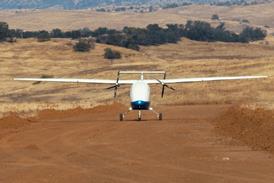Latin American and Caribbean airline association ALTA has reported 4% growth in passenger traffic for 2009, driven by large gains in Brazil.
ALTA today said its members carried 123.5 million passengers in 2009, a 4% increase over the 119.2 million passengers transported in 2008. On an RPK basis, ALTA's traffic grew by 3% from 173.6 billion to 178.7 billion.
Latin America's ability to again chalk up positive annual traffic growth while most other regions recorded declines was not a surprise given most of Latin America has been on a recovery path since mid 2009. After recording small year-over-year declines during the first half of the year ALTA ended the year with four consecutive months of double-digit traffic increases, including a 14% surge in December to 11.7 million passengers.
"We weathered the storm nicely," ALTA executive director Alex de Gunten tells ATI sister publication Airline Business. "Mexico was hard hit but the rest of the region is well positioned for growth."
Excluding Mexico, which has been hit hard due to its close economic ties with the US and the H1N1 virus, ALTA passenger traffic would have increased last year by more than 6%. Mexico is the second largest Latin American market, accounting for roughly one fifth of the region's traffic.
The Mexican domestic market shrunk 11% in 2009 to 24.6 million passengers while total international traffic dropped 12% to 22.5 million passengers. Traffic in Mexico has stabilised somewhat in recent months with smaller single-digit declines.
Copa Airlines CEO Pedro Heilbron told analysts last week that the rest of Latin America started recovering in the third quarter of last year from what he calls a "short and mild recession". Heilbron expects "this recovery will continue in 2010" as GDP is projected to grow this year by 5% in South America and 3% in Central America.
"It appears the worst is behind us and the region is once again on a growth path," Heilbron says. "Business traffic is improving and we are currently seeing higher business class load factors and strong traffic trends."
Colombia and Brazil in particular have been growing fast with low fares helping stimulate new demand. As previously reported by ATI and Flightglobal, on an RPK basis Colombia's domestic market grew 15% in 2009 while Brazil's domestic market grew 18%.
De Gunten says Brazil in particular had a strong performance in 2009, which in turn had a positive impact on ALTA's overall figures as Brazil accounts for roughly two-fifths of the region's total traffic.
De Gunten credits Brazil's strong performance to a robust local economy and market stimulation as more bus passengers were enticed by lower fares. He expects the Brazilian market, which has already reported 32% RPK domestic growth for January, to continue growing at a fast clip in 2010 as the country's economy is now projected to expand by a healthy 6% this year. "They are the ones that have really picked up," de Gunten says, referring to Brazil.
While ALTA members collectively were able to record positive passenger traffic growth for the year, cargo traffic dropped 4% to 3.1 billion FTKs. Passenger load factors were also down, slipping from a 71.2% average in 2008 to 70.5% in 2009, as 4% growth in ASKs outpaced the 3% growth in RPKs.
Of the 123.5 million passengers carried in 2009 by ALTA members, 108 million were transported within the region including 83.7 million on domestic routes. This represents a 5% and 8% increase respectively, over 2008 levels. Traffic in 2009 on routes to and from the region dropped 5% to 15.5 million passengers.
Source: Air Transport Intelligence news
















